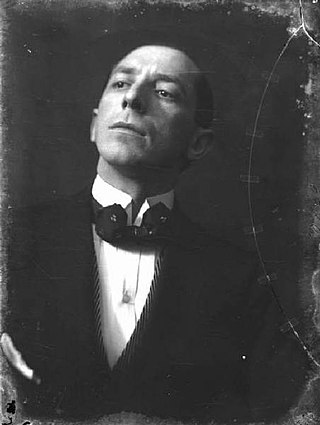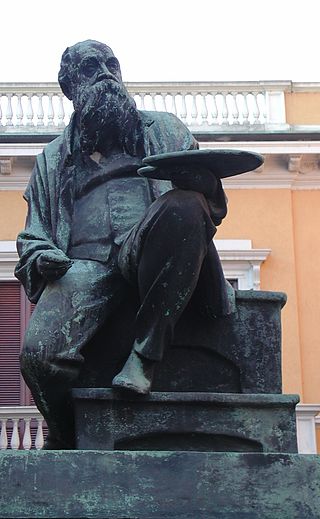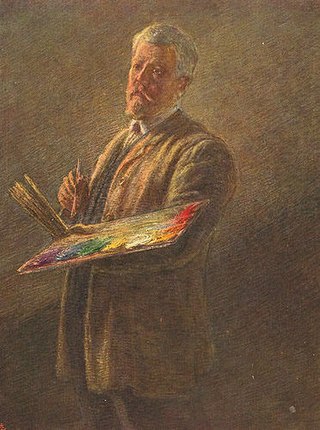Related Research Articles

Umberto Boccioni was an influential Italian painter and sculptor. He helped shape the revolutionary aesthetic of the Futurism movement as one of its principal figures. Despite his short life, his approach to the dynamism of form and the deconstruction of solid mass guided artists long after his death. His works are held by many public art museums, and in 1988 the Metropolitan Museum of Art in New York City organized a major retrospective of 100 pieces.

Guglielmo Caccia called il Moncalvo was an Italian painter of sacred subjects in a Mannerist style.

Alessandro Magnasco, also known as il Lissandrino, was an Italian late-Baroque painter active mostly in Milan and Genoa. He is best known for stylized, fantastic, often phantasmagoric genre or landscape scenes. Magnasco's distinctive style is characterized by fragmented forms rendered with swift brushstrokes and darting flashes of light.

Mosè Bianchi (1840–1904) was an Italian painter and printmaker.

Vincenzo Irolli was an Italian painter.

Pompeo Mariani was an Italian painter.

Gaetano Previati was an Italian Symbolist painter in the Divisionist style.

Pasquale Liotta Cristaldi (1850-1909) was an Italian painter.
Eugenio Tano was an Italian painter.

Alberto Issel (1848–1926) was an Italian painter.
Giuseppe Raggio (1823–1916) was an Italian painter.

Pietro Pajetta was an Italian painter, mainly of genre subjects.

Giuseppe Amisani was an Italian portrait painter of the Belle Époque.

Alfredo Luxoro (1859–1918) was an Italian painter, mainly of landscapes, genre, and orientalist themes.

Giovanni Battista Quadrone was an Italian painter, mainly of genre scenes.
Gaetano Mormile was an Italian painter, mainly of genre subjects, often peasants in folkloric dress, but also vedute and Neo-Pompeian subjects.
Virgilio Ripari ) was an Italian painter, mainly depicting genre scenes of women and flowers. His style is described as a late Romantic, often depicting nuns and scene galanti.
Giovanni Ottavio Rappetti was an Italian painter, mainly of genre subjects.
Raffaele Armenise was an Italian painter and scenographer, mainly painting history and genre subjects.
Giuseppe Ferdinando Piana was an Italian painter.
References
- ↑ Istituto Matteucci biography.
- ↑ Dizionario degli Artisti Italiani Viventi: pittori, scultori, e Architetti., by Angelo de Gubernatis. Tipe dei Successori Le Monnier, 1889, page 294.